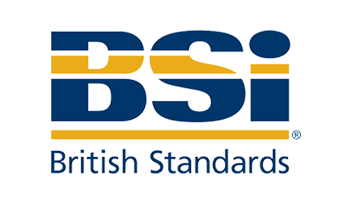
British Standards exist to guarantee a certain level of quality and consistency. BS 4800 is a standard range of colours for paints, created by the British Colour Council and is used mainly in construction and interior decoration. A colour’s name may change, but its number is constant. The BS 381C is a different colour range created by the British Standards Institute, using similar practices to define a different range of colours.
When the British Colour Council (BCC) came into existence in 1930, one of the core objectives was the placing of the British Empire’s colour determination in British hands, as well as presenting a standard code for colours to maintain clarity. The Council published a Dictionary of Colour Standards in 1934, showing 220 named, numbered and coded colours along with a brief history of each one.
As the BCC developed its services for industry, it swiftly became clear that the dictionary had a bias towards textiles that made it less relevant as a reference point for interior decoration. Thus, in 1949, there was a new publication called the Dictionary of Colours for Interior Decoration.
The new publication would become the initial version of the BS 4800, and was made up of 3 volumes, 2 of which were colour samples. With the third was a list of the names and the history of those colours. It was a vast work that illustrates 378 colours shown on 3 different surfaces: gloss, matt and a pile fabric, which was akin to carpet. One reference name and a number were assigned to each colour, and it was emphasised that the required surface should be considered when using the dictionary to match colours. Any colours that were repeated from the previous Dictionary of Colour Standards were given the same standard name – this applied to 131 of the 378 colours. The modern BS 4800 evolved from the Schedule of Paint Colours for Building Purposes first prepared by the Pigments, Paints and Varnishes Standards Committee in 1972, and was later revised in 2011.
The colours were then cross-referenced with most of the other leading international standards, including that of the British Standards Institution (BSI). This classification presented a list of colours for ready mixed paints, and the colour range is labelled BS 381C. The BSI’s first colour standard was BS 381, published in 1930, and it was different from the work of the BCC. It was not a co-ordinated range of colours, but a collection of specific individual colours for certain uses like signalling and coding, camouflage and identification for bodies like the armed forces and government departments. BS 381C came about in 1948 as a range of colours for ready mixed paints, now consisting of 91 colours that are different from the BCC 4800 range.
The 4800 and 381C are two separate ranges of standard colours that are distinguished from one another by the history behind their development. Today, they are commonly used in conjunction with one another by industry professionals as they are the most comprehensive overall ranges for choosing and matching standardised colours. Though the European RAL system is slowly replacing British Standard colours, many professionals still prefer to use the BS ranges for their work.
To provide the best experiences, we use technologies like cookies to store and/or access device information. Consenting to these technologies will allow us to process data such as browsing behaviour, unique IDs, user accounts on this site etc. Not consenting or withdrawing consent, may adversely affect certain features and functions.